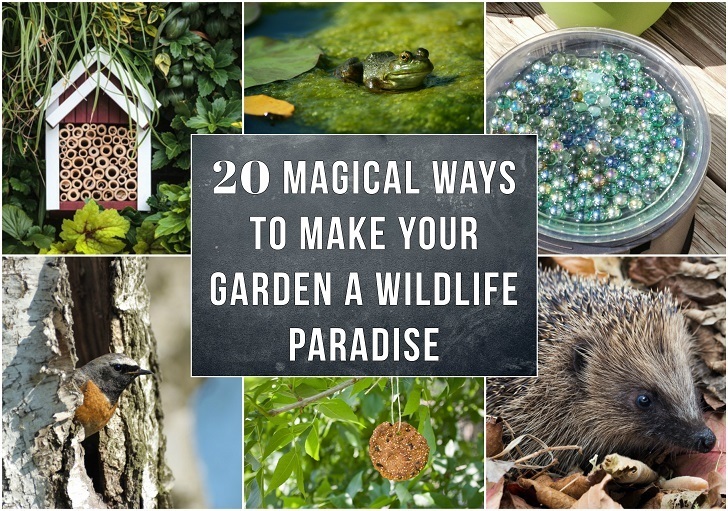
Love gardening? Then you’ll love our brand new Kindle book: 605 Secrets For A Beautiful, Bountiful Organic Garden: Insider Secrets From A Gardening Superstar.
To be truly alive, a garden needs wildlife! Setting up a mini eco-system – by attracting a variety of small mammals, birds, reptiles and bugs – is key to enjoying true harmony and natural balance.
In addition to being surrounded by a vibrant and thriving environment, you can rest safe in the knowledge that you are contributing to the preservation of local wildlife by offering a safe haven to those that have lost their natural habitats due to urbanization.
These creatures will pay you back tenfold – by naturally and organically maintaining pest control and cross-pollinating your plants for increased fruit and seed production. It’s a win-win for everyone!
Here are 20 ways that you can make your backyard more attractive to a variety of animal and insect life:
Ladybug Feeder
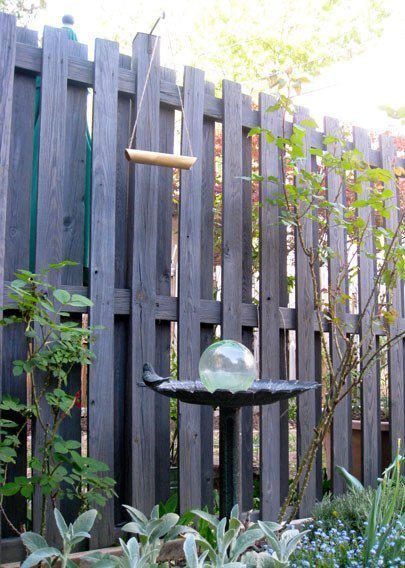
The colorful ladybug is one of the most beneficial insects you can have in your garden – each one feasts on up to 50 aphids a day! They also enjoy snacking on mealybugs, leaf hoppers, scales and mites.
Along with making clever planting choices, building a ladybug feeder is one of the best ways to attract these little beetles to your garden. All you need to make a basic hanging feeder is a piece of bamboo, garden twine, a few raisins and some basic tools. You’ll find the full tutorial here.
Insect Hotel
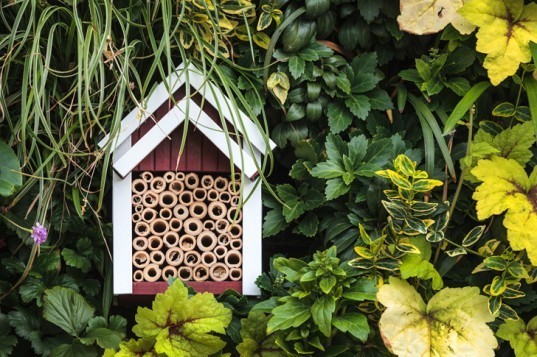
Of course, the ladybug isn’t the only beneficial insect you’ll want to attract to your garden. Bees, wasps, butterflies and several species of moths will all appreciate a safe haven and a warm place to hibernate over the winter.
In order to appeal to a variety of these creatures, you can construct a ‘hotel’ made from a mixture of materials and compartments of differing sizes. This will leave you not only with an amazing bug condo, but a pretty garden feature, and a fascinating talking point. Here is how to make a completely free insect hotel from found, recycled and up-cycled materials.
Hiding Holes for Pollinators
If constructing a fully-fledged insect condominium is too onerous, another option is to simply drill holes into a timber post which is located in a sunny position. Solitary bees and wasps will happily lay their eggs here and hang around your garden, pollinating flowers and keeping garden pests at bay.
Hedgehog Log Pile
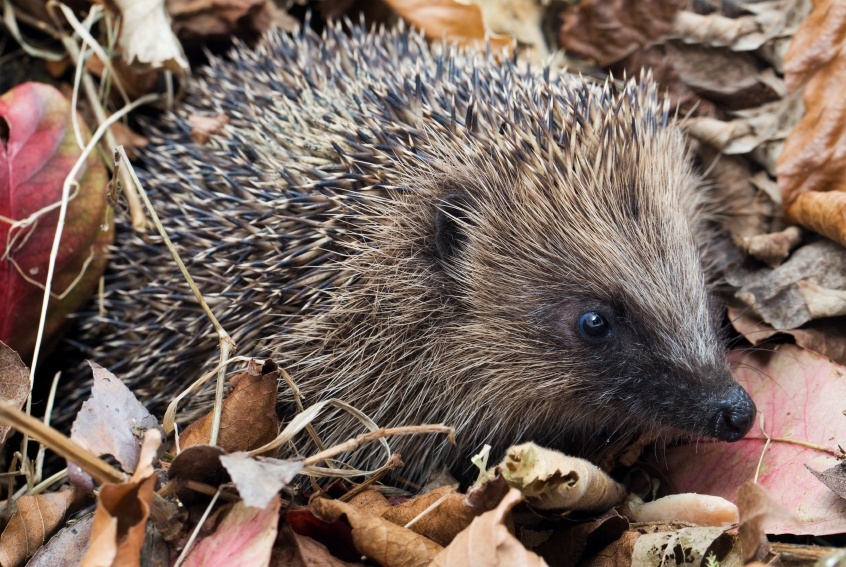
Little hedgehogs will delight in a humble pile of logs! Not only will the hogs use the pile for hiding, hibernating and nesting under, but the rotting wood will attract insects, snails and caterpillars to your garden for the hedgehogs to eat.
Creating this log pile is totally free and couldn’t be simpler. Just collect old untreated wood from your backyard, your local park or forest, and pile it up in an undisturbed corner of the garden. Replenish this pile from time to time as the wood rots away.
Fallen Leaves
Rake fallen leaves into a damp, shady corner of the garden to provide both food and a habitat for many species including frogs, toads, newts and centipedes. Hedgehogs will also appreciate these leaves as a safe place to rest and forage.
Build a Pond
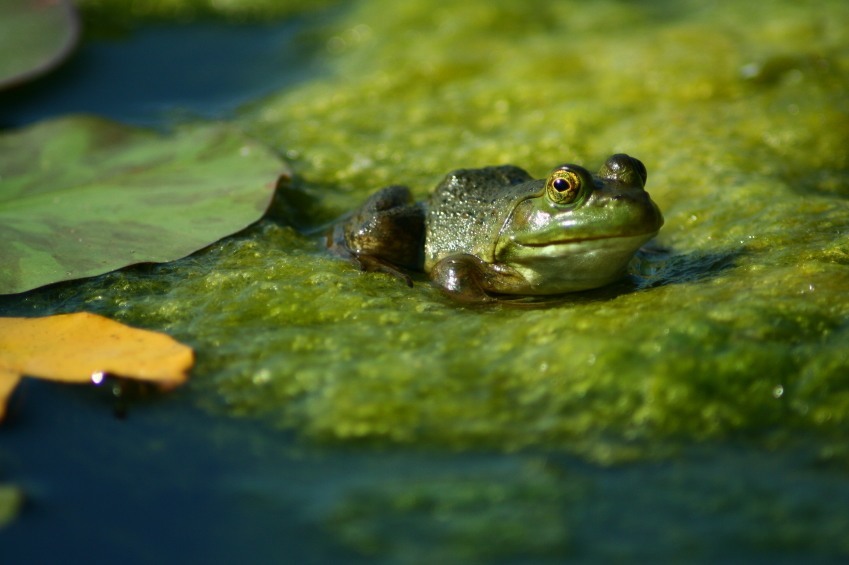
Ponds are an amazing resource for encouraging wildlife into your backyard. They’re also a fantastic focal point, and provide little ones with a hands-on introduction to the circle of life and the water cycle.
Once installed, you will almost immediately see an array of creatures and insects appear in your garden. Birds will relish the opportunity to drink and bathe; frogs and newts will take advantage of a vital breeding spot; while hedgehogs will visit to bathe and to hunt (although they cannot swim so will need a log or plank leading out of the pond onto land).
A variety of fascinating insects will also appear: helping to pollinate and providing a food source for larger creatures. Details on positioning, installing and stocking your pond can be found here.
Rock Garden
Natural stone not only looks great in the garden, but it provides a diversity of habitats for wildlife. It’s also low maintenance and attracts specialized insects such as mason bees.
Shady locations draw stone-loving beetle larvae and amphibians, while stone piles in sunny spots entice other species. Rock piles beside water provide habitat for amphibians and insects.
Choose stones in a range of sizes and shapes, remembering that the gaps in between are more important than the stones themselves!
Wildlife Doorway
If your garden is completely walled in, then consider cutting a small hole in the fencing to allow little creatures – like hedgehogs or toads – to gain access.
By cutting a CD-sized hole these animals can roam more widely, enabling them to forage for food and meet breeding mates. Larger predators like foxes won’t be able to fit in such a small gap, and most breeds of pet dog won’t be able to escape either.
Bat House
For those that are mosquito magnets, a bat house is a must! One little brown bat can eat 60 medium-sized moths or over 1,000 mosquito-sized insects in one night – meaning you won’t need to slap on toxic chemical repellants like DEET.
With so much urbanization, many bats struggle to find a suitable home, so building them a house is a mutually beneficial gesture. A good bat house should mimic the space between bark and a tree trunk – these flying creatures like tight, warm spaces. Follow these steps to build the perfect bat house for your garden.
Bird Feeders
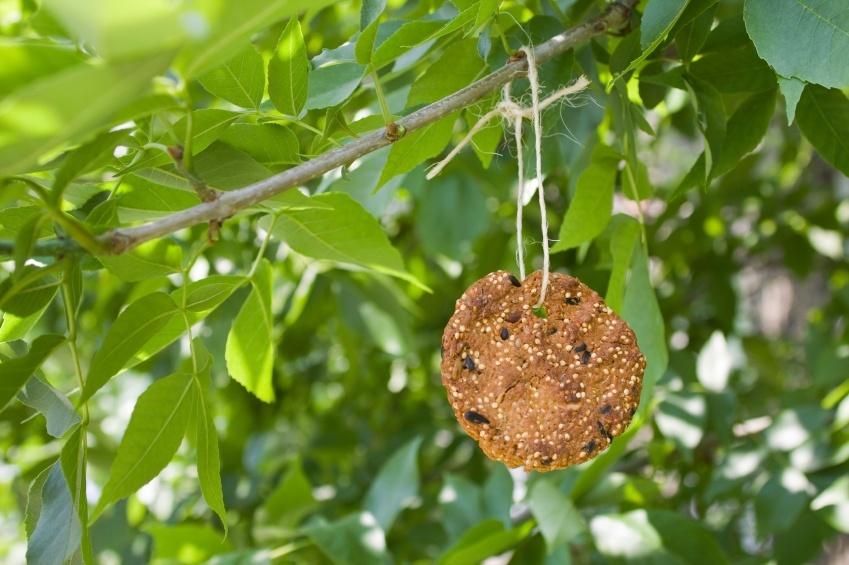
If you enjoy bird watching, then a couple of strategically placed bird feeders will allow you to view these winged beauties up close.
While there are a ton of bird feeders available to buy online or at the store, a homemade version can be made for free – a little time is all that’s required. They can be fashioned from virtually anything – cups, saucers, reclaimed wood, mason jars, pine cones and more.
Just make sure you position your feeder out of the reach of neighborhood cats and other predators! Here are 21 DIY bird feeders to attract feathered friends to your garden.
Nesting Box for Birds
Go one step beyond providing a feeding area for birds and provide a nesting area for them too – a cozy and safe place to raise their young.
Although several species can nest in dense foliage, others require holes for nesting – some can excavate their own, like woodpeckers, but more depend on abandoned nesting holes or natural cavities. Due to an increase in the removal of damaged trees and a rise in the number of invasive birds, few natural or abandoned cavities remain up for rent.
That’s where you come in! Learn how to build and place a nesting box here.
Boundary Hedge
Replace your tired old fence with a green, living boundary hedge. Not only will it bring delightful color and aroma to the garden, but it can mark the boundary line, keep out intruders (especially if you plant particularly thorny shrubs), allow small wild creatures to enter, act as a windbreak and provide shade in certain areas.
When it comes to wildlife, a hedge is a fantastic garden asset which can provide homes and food for many insects and birds. Here, they can enjoy shelter and a place to hibernate and nest, while they feast on the flowers and berries the shrubbery provides.
Leave Out Food
If you want to leave out food for wild animals, like foxes and hedgehogs, make sure to do so around dusk, as these animals are nocturnal.
The summer months are a good time to feed these creatures, as they often struggle to feed on bugs and worms, which can burrow down deeply when the ground becomes hard due to sun and a lack of rain.
What’s more, hedgehogs may not survive their winter hibernation if they do not get enough food in the summer months.
Opt for moist or dry pet food (although nothing fish based for hedgehogs) or table scraps and leave it well away from your house.
Fresh Water
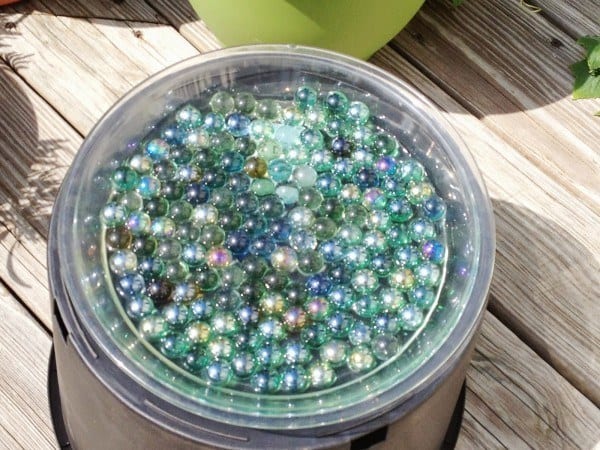
If you don’t have a pond, make sure to leave out a source of water for birds and wildlife. In fact, a habitat that appears to be a haven for wildlife can remain unused if no water is nearby!
A suspended birdbath is great for birds and bats, and will offer protection from predators. A shallow dish placed near cover can help hydrate small mammals, reptiles and butterflies. To build a watering station for pollinators, like bees and wasps, follow these steps.
To go the extra mile, set a small pool (one or two feet deep) into the ground. Ensure a steady supply of water in the hot summer months, and an ice-free source during cold periods.
Colorful and Varied Plant Life
For a truly living garden, you’ll want to plant some colorful flowers and shrubs to attract beneficial insects like ladybugs, butterflies and bees.
Choose plants in all sizes, scents and colors – that flower at different times of the year – to delight and tempt. Taller flowers will attract flying friends such as dragonflies, while night scented plants such as buddleia and evening primrose provide allure for moths – which are a favorite midnight snack of bats.
Butterflies love these 30 beautiful plants while bees are attracted to these 20 stunning flowers.
Mixed Trees and Shrubs
Plant a range of trees, shrubs and climbers to provide food and shelter. Larger plants, particularly trees, support more wildlife and their flowers, fruits and seeds provide food for everything from insects to birds.
Small trees and shrubs – particularly those that have fruit and berries – also provide food for both humans and animals.
Mature Trees
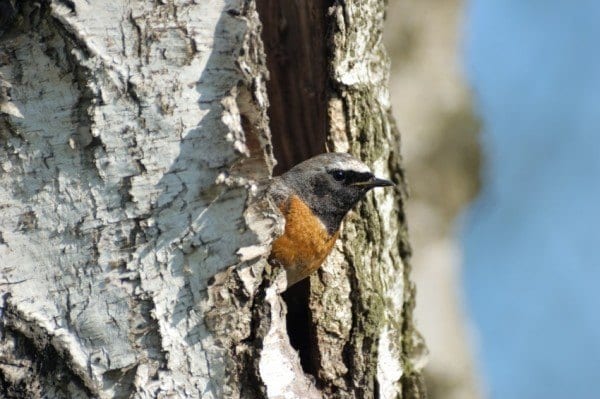
Large mature trees not only give birds somewhere to nest but provide fruit for foxes, badgers and even deer. Saving a few dead or dying trees, called snags, is important to provide nesting sites for owls, woodpeckers and squirrels. Furthermore, bats use hollow trees for roosting.
Compost
Aside from the fact that compost is a great way to recycle, and provides a wealth of nutrients to garden soil, it encourages a healthy diversity of wildlife in the garden.
Good quality compost provides food for decomposers like invertebrates and plants which, in turn, attract birds and mammals. These bugs include snails, slugs, millipedes, centipedes, fruit flies and worms along with fungi. Toads are also attracted to compost, as are wood mice.
Here is all you need to know about composting.
Keep it Organic
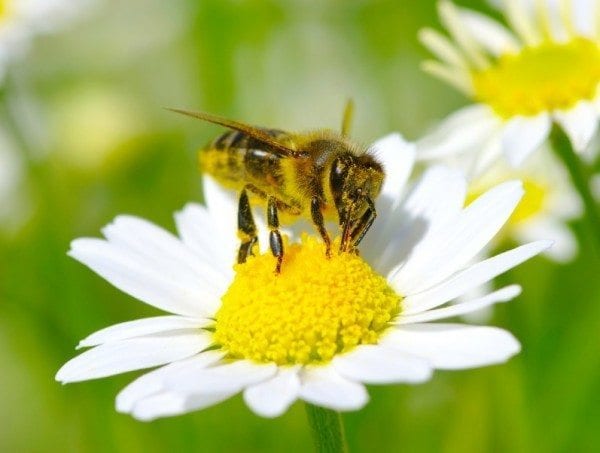
Practice sustainable gardening techniques by shunning the use of synthetic pesticides. These are not only toxic to garden pests, but also to those beneficial bugs you are trying to attract. In fact, pesticides are responsible for the rapid decline in global bee populations. And if you grow your own fruit and vegetables, you definitely don’t want to put these pesticides into your body!
Learn how to use organic gardening methods instead and you’ll enjoy a diverse and thriving garden, which causes zero environmental damage.
Forget Perfection
The most beautiful and vital gardens aren’t perfectly manicured – they resemble the natural landscape. They’re wild, dynamic, filled with a variety of colors, plants of all sizes and creatures big and small.
While a pristine lawn is the goal of many gardeners, those who value wildlife will shun this notion. Patches of longer grass are essential for egg-laying species like butterflies, while unpruned plants during winter leave seeds to feed animals during the cold spell.
